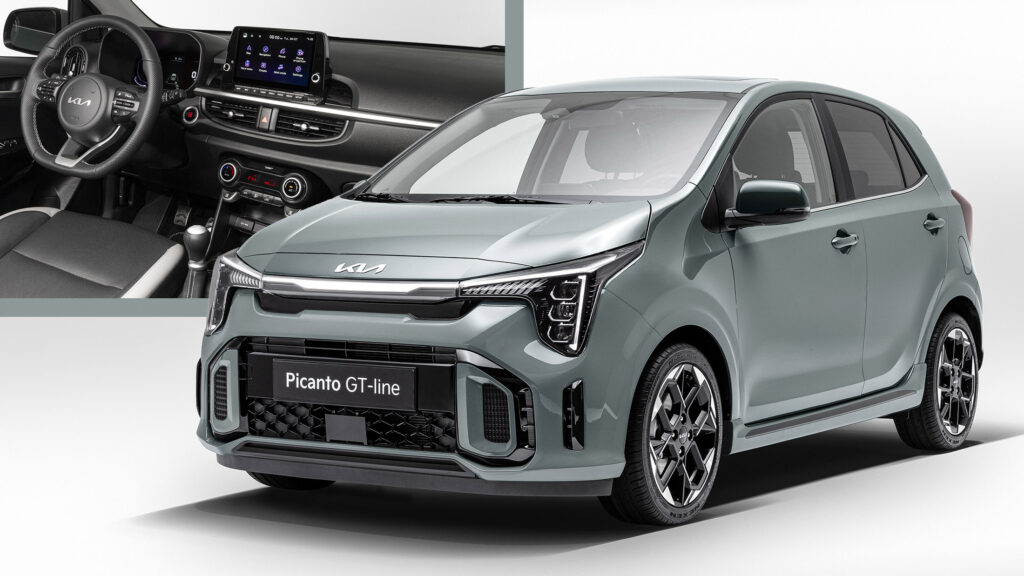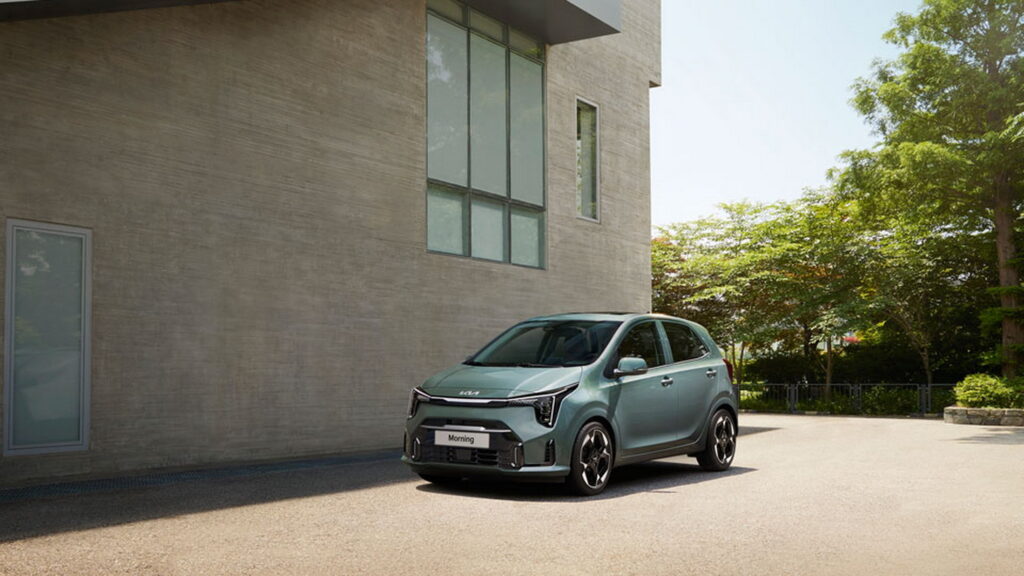The Toyota Aygo X rival has a more aggressive front end and is available with two naturally aspirated engines
5 hours ago
 –>
–> 
–>
In a world where ICE-powered city cars are becoming an endangered species, Kia keeps the Picanto relevant with a comprehensive update. The smallest member in the Kia range adopts more aggressive styling alongside improved tech inside the cabin, although it is now exclusively available with naturally aspirated engines, losing the turbo option.
The third-gen Picanto was originally introduced in 2017 and got a mild update in 2020. This time, Kia is more serious when it comes to styling updates, with the Picanto adopting the “Opposites United” styling language in its own unique way.
More: 2023 Hyundai i10 Breaks Cover With Mild Updates, Retains Sporty N Line Trim
The highlight of the second facelift is the new face, with the new Y-shaped headlights (optionally LED) giving it an angrier and sportier look. The bumper is also new with a revised chrome-infused tiger-nose grille and a more complex central intake featuring gloss black trim and body-colored elements. The profile is largely carried over while at the back, the Picanto got a new pair of LED taillights which are now connected below the rear glass. The rear bumper is also updated with sharper styling cues including smaller reflectors on the faux vents, a more aggressive diffuser, and the absence of visible tailpipes.
In typical Kia fashion, we only get to see the flagship GT-Line trim and not the base model which will adopt a simpler design for the bodykit. There is no mention of the crossover-style X-Line trim so there’s a chance it might have been discontinued. The base model comes standard with 14-inch wheels, in contrast with the GT-Line which gets 16-inch alloys with a diamond-cut finish. The color palette comprises 9 options, including 4 new shades (Signal Red, Smoke Blue, Sporty Blue, and Adventurous Green).
No Turbo Power For The Picanto
advertisement scroll to continue
Despite looking like a tiny hot hatch, the facelifted Picanto is actually slower than its predecessor, as the turbocharged 1.0 T-GDi engine with 99 hp (74 kW / 100 PS) has been discontinued from the range. This is kind of weird as the recently facelifted and mechanically-related Hyundai i10 retains this option.
In Europe and Australia, the Picanto is now available with a choice of two naturally-aspirated petrol units – the 1.0 MPi three-cylinder or the 1.2 MPi four-cylinder. Both received improved exhaust gas recirculation lines, combustion chamber cooling, and optimized intake valve timing resulting in greater efficiency and lower emissions. Kia didn’t mention the output figures, but in the Hyundai i10 sibling the 1.0-liter makes 67 PS (66 HP) and the 1.2-liter is good for 83 hp (62 kW / 84 PS) respectively. Power is transmitted to the front wheels through either a 5-speed manual gearbox, or a 5-speed automated manual. The Korean-spec Kia Morning is exclusively available with a 1.0-liter engine and a different four-speed automatic.
In terms of driving dynamics, the Picanto retains the sporty suspension setup, the torque vectoring by braking, and the quick steering which place it among the most fun-to-drive options in the A-Segment.
Mildly Updated Interior
Moving inside, changes are less substantial although the technology aspect has been improved and the materials have been updated. The dashboard layout is carried over, but the 8-inch Kia Connect infotainment is now compatible with over-the-air updates while supporting dual Bluetooth connections, Online Voice Recognition, Apple CarPlay, and Android Auto. The central display retains the physical knobs and is combined with a standard 4.2-inch digital instrument cluster.
The base Picanto gets black cloth upholstery for the seats, while the GT Line upgrades to artificial leather, following Kia’s commitment to leather-free interiors. The Glossy Black, Adventurous Green, and Rich Brown packages allow personalization of the trim elements, with the former coming standard in the GT-Line. Kia brags about the practicality of the Picanto which can fit up to 1,010 lt (35.7 cubic feet) of luggage when the seats are folded. Safety equipment is also improved with new and updated ADAS which are available depending on the trim level, and up to six airbags.
Kia hopes that the facelifted Picanto will continue the sales success of its predecessor, which is the automaker’s best-selling product in several regions. We don’t know if this is going to be the last ICE-powered Picanto, but Kia’s strategy includes 15 new fully electric models by 2027. Rivals of the Kia Picanto in the European A-segment are limited to the Toyota Aygo X, the Hyundai i10, the Fiat Panda, and the Suzuki Ignis. Pricing will be announced at a later date.


